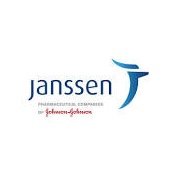Asthma Non-Prescription
Non-prescription asthma products encompass a range of over-the-counter items designed to aid individuals with asthma or related respiratory concerns. Read More…

-

AeroChamber Plus Spacer
- Quick and hassle-free application
- Increase inhaler effectiveness
- Fits common prescribed inhalers
£9.20 Add to basket -

Peak Flow Meter (Standard & Low)
- For Quick And Hassle-Free Delivery Of Asthma Medication
- Measure and monitor peak flow
- Increases Inhaler Effectiveness
£9.99 – £14.29 Select options -
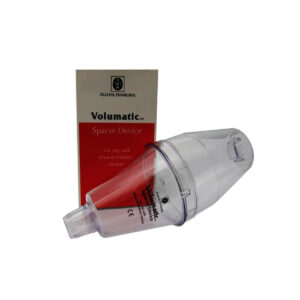
Volumatic Adult & Paediatric Spacer
- For Quick And Hassle-Free Delivery Of Asthma Medication
- Increases Inhaler Effectiveness
- Fits Most Prescribed Inhalers
£8.49 – £13.19 Select options -
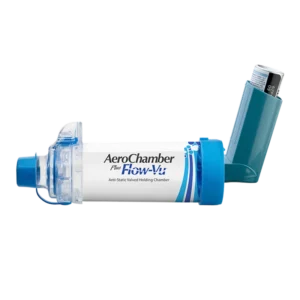
AeroChamber Plus Flow-Vu Mouthpiece
- Helps inhale MDI medications correctly
- Helps with coordination and control when using MDIs
£9.39 Add to basket -
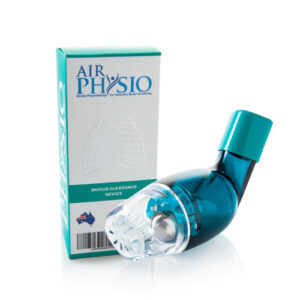
AirPhysio Average Lung Capacity Device
- Drug and chemical free, handheld device
- Accommodates different lung conditions
- Easy to use, has intuitive controls
£64.99 Read more -
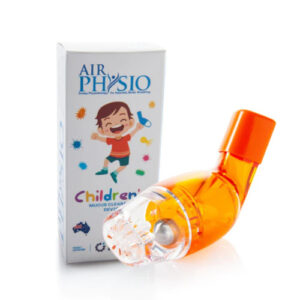
AirPhysio Children Device
- Drug-free handheld device
- Loosens mucus, allowing easier expulsion
- Opens blocked and semi-closed airways
£64.99 Add to basket -
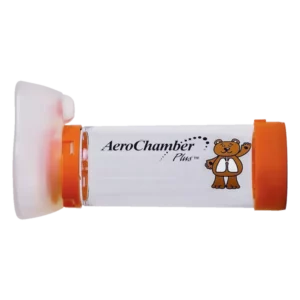
AeroChamber Plus Infant with Mask
- Increases inhaler effectiveness
- Fits most commonly prescribed inhalers
- Quick and hassle free application
£15.59 Add to basket -

AeroChamber Plus Child with Mask
- Increases inhaler effectiveness
- Fits most commonly prescribed inhalers
- Quick and hassle free application
£15.59 Add to basket -

AeroChamber Plus with Adult Mask
- Increases inhaler effectiveness
- Fits most commonly prescribed inhalers
- Quick and hassle free application
£15.59 Add to basket -

AeroChamber Plus Flow-Vu with Infant Small Mask
- For infants 0-18 months
- Anti-static valved holding chamber
- Fits all commonly prescribed metered dose inhalers
£15.49 Add to basket -

AeroChamber Plus Flow-Vu with Child Medium Mask
- Medium mask for children 1-5 years
- Anti-static valved holding chamber
- Fits all commonly prescribed metered dose inhalers
£15.59 Add to basket -
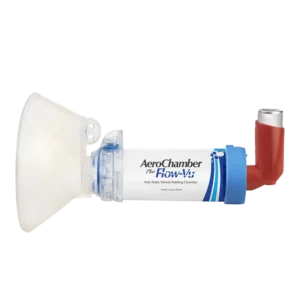
AeroChamber Plus Flow-Vu with Adult Large Mask
- Adult large mask
- Anti-static valved holding chamber
- Fits all commonly prescribed metered dose inhalers
£15.49 Add to basket -

AirPhysio Sports Performance Device
- Drug and chemical free, handheld device
- Accommodates different lung conditions
- Requires no batteries or refills
£64.99 Add to basket
-
About Asthma
Asthma is a chronic condition characterised by inflammation of the airways, leading to symptoms such as wheezing, coughing, shortness of breath, and chest tightness. While the exact cause of asthma is not fully understood, it is believed to result from a combination of genetic and environmental factors. Asthma triggers can vary among individuals but commonly include allergens like pollen, dust mites, pet dander, respiratory infections, physical activity, cold air, and air pollutants. Asthma management focuses on avoiding triggers, using prescribed medications, and monitoring symptoms to prevent flare-ups and maintain control of the condition.
-
Symptoms of Asthma
Asthma symptoms can vary in severity and frequency, ranging from mild to severe. Here are some common symptoms experienced by individuals with asthma:
Wheezing: A high-pitched whistling sound when exhaling, often associated with asthma attacks. It occurs due to the narrowing of the airways.
Coughing: Persistent coughing, especially at night or early in the morning, can be a sign of asthma. The cough may worsen with cold air or exercise.
Shortness of Breath: Difficulty breathing or feeling out of breath, often described as a feeling of tightness in the chest.
Chest Tightness: A sensation of pressure or tightness in the chest, which can be uncomfortable or painful.
Rapid Breathing: Increased breathing rate, often accompanied by other symptoms such as wheezing or coughing.
It’s important to note that asthma symptoms can be triggered or worsened by various factors, including allergens (e.g., pollen, dust mites), irritants (e.g., smoke, pollution), respiratory infections, physical activity, cold air, and stress.
If you or someone you know experiences these symptoms, it is advisable to consult a healthcare professional for proper diagnosis and management. Early diagnosis and treatment can help control asthma symptoms and prevent asthma attacks.
-
Diagnosis
Diagnosing asthma typically involves a combination of assessing symptoms and performing certain tests. Here’s an overview of the process:
GP Consultation
Symptom Assessment: A general practitioner (GP) will inquire about your symptoms, their frequency, and any potential triggers. They’ll also ask about any related conditions such as eczema or allergies, or a family history of such conditions.
Physical Examination: The GP may listen to your breathing and check for any signs of other conditions that could be causing your symptoms.
Tests for Asthma
FeNO Test: This test measures the level of nitric oxide in your breath, which can indicate inflammation in your lungs.
Spirometry: This involves blowing into a machine that measures how fast you can breathe out and how much air you can hold in your lungs.
Peak Flow Test: You’ll blow into a handheld device that measures how fast you can breathe out. This test might be repeated several times over a few weeks to see if your results change over time.
In some cases, additional tests such as a chest X-ray or allergy tests might be conducted to rule out other conditions or identify potential triggers.
-
Treatment
Treatment
Over-the-counter (OTC) asthma inhalers can help manage mild asthma symptoms. They’re less costly than prescription inhalers and do not require a doctor’s visit, offering convenience and savings. Products like the AeroChamber Plus Asthma Inhaler Spacer offer quick and hassle-free application, increasing the effectiveness of most prescribed inhalers. Similarly, the Volumatic Adult & Paediatric Spacer is designed for quick and hassle-free delivery of asthma medication and fits most prescribed inhalers, enhancing their effectiveness.
For measuring and monitoring peak flow, essential for people with asthma, the Peak Flow Meter (Standard & Low) is an over-the-counter option that increases inhaler effectiveness. Additionally, the AeroChamber Plus Flow-Vu Mouthpiece aids in correctly inhaling MDI (Metered-Dose Inhaler) medications and helps with coordination and control when using MDIs.
People with more severe asthma may need prescription inhalers, which can be significantly more expensive but necessary for effective management of the condition. If asthma symptoms are more than mild and intermittent, it’s essential to consult a healthcare provider for proper treatment and medication. These products underscore the importance of appropriate asthma management and the availability of tools to assist with self-care. However, they are most beneficial when used under the guidance of a healthcare provider, ensuring that each individual’s treatment is tailored to their specific needs.
-
Prevention Strategies
Managing asthma often involves a combination of medical treatment and personal vigilance to minimise exposure to asthma triggers. While asthma cannot be completely prevented, the following strategies can help reduce the frequency and severity of asthma attacks:
Avoid Allergens: Common allergens like dust mites, pet dander, pollen, and mould can trigger asthma attacks. Use allergen-proof mattress and pillow covers, wash bedding in hot water, and keep indoor humidity below 50% to prevent mould growth.
Stay Away from Smoke: Smoke from cigarettes, fires, and cooking can aggravate asthma. Avoid smoking and exposure to second-hand smoke; use exhaust fans in the kitchen.
Control Indoor Air Quality: Use high-efficiency particulate air (HEPA) filters in your home’s HVAC system to trap potential triggers. Ensure regular maintenance of air conditioning units.
Prevent Respiratory Infections: Colds and flu can trigger asthma flare-ups. Wash your hands frequently, get vaccinated against influenza and pneumonia, and avoid close contact with people who are sick.
Exercise Indoors When Air Quality Is Poor: Outdoor exercise can be beneficial, but on days when air pollution or pollen levels are high, it’s better to work out indoors.
Maintain a Healthy Weight: Being overweight can worsen asthma symptoms. Eat a balanced diet and exercise regularly.
Monitor Your Breathing: Be aware of your asthma triggers and monitor your breathing with a peak flow metre to detect signs of an impending attack early.
Use Medications as Prescribed: If you have been prescribed maintenance inhalers or other asthma medications, use them consistently as directed, even when you feel well.
Develop an Asthma Action Plan: Work with your healthcare provider to create a personalised action plan that details how to manage your asthma daily and how to handle worsening symptoms.
Practise Regular Deep Breathing Exercises: Techniques such as diaphragmatic breathing can help control breathing and reduce stress, which can, in turn, reduce the frequency of asthma attacks.
Each individual’s triggers and severity of asthma are different, and these strategies should be customised to fit one’s specific needs. Regular check-ups with a healthcare provider are essential for monitoring asthma and adjusting treatment as necessary.











